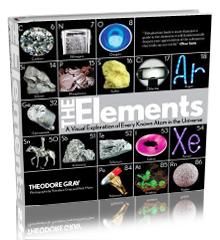Arizona Raspberry Copper Nodules/Nuggets. | |||
| Sample Image | |||
| Arizona Raspberry Copper Nodules/Nuggets. Really strange looking nodules. The distinction between nodules and nuggets is that nodules are formed by precipitation or other chemical action while nuggets are formed by mechanical action in the solid state. At least, I think that's the distinction implied by this letter from the US Geological Survey, which offered an opinion on these things back in 1978 (click on the picture to get a readable version in a separate window): A possible history of these rather strange nuggets is told by this letter, supplied by the eBay seller (who has more if you email him at coppernuggets@yahoo.com): The seller supplied a copy of an analysis indicating them to be 94.8% copper, but not saying what the rest was, other than that it wasn't palladium, platinum, or rhodium. I confirmed the analysis by x-ray fluorescence spectroscopy at the Center for Microanalysis of Materials, University of Illinois (partially supported by the U.S. Department of Energy under grant DEFG02-91-ER45439), getting a result of 94.9% copper, 5.1% iron. The iron explains the fact that they are slightly magnetic. And they certainly are quite curious and pretty, whether the story is 100% true or not, which as you will see is not particularly likely. I cut one in half (actually I ground half of it away with a bench grinder), and this is what it looks like inside: According to the USGS letter, the core is some mixture of copper oxides, but clearly the bulk of it is metallic copper. I made a QuickTime VR 3D image of the sliced version (warning, it's a high-resolution, 12MB file). By way of fact-checking, I looked up the name on the USGS letter, and (probably on account of the unusual name), got lucky with the first email address I tried. The response was great: Yes, I am the same person although doing very different things now . I have my own business (www.specmin.com) and no longer work for the USGS.She's going to get some of the nuggets and show them around to her mining industry friends and of course I'll report anything that comes up. Coincidentally I later got an email on an unrelated subject from another person, Joe Taggart, who currently works at the USGS. It turns out he knew Phoebe when she worked there. He didn't see the nodules when they had them in 1978, but based on the pictures on my website and Phoebe's letter, he said they looked like they might be pseudomorphs, clusters of cuprite crystals which were then converted into copper metal by the action of a reducing solution. At that point I thought I knew the answer for sure: They were naturally occurring copper nodules! But that confidence lasted all of one day, because not long after the first email, I got another one from Joe saying, wait, wait, that can't be right. He'd thought about it some more and asked around with other experts in the field, and they said, no, those copper nodules are too dense to be pseudomorphs, they are a by-product of the electrowinning process of refining copper from copper ore. In fact, he said, a colleague has a similar nodule collected from just such an industrial operation. Well, that settles it, right? Since the natural-origins theory has a number of issues, if they have a similar nodule that is known to be artificial, that would be pretty good evidence that mine are artificial too. I was pretty well convinced that they were artificial at this point. But this new confidence was even shorter-lived. Just a couple of hours later he sent another email giving me permission to quote him on my website, but in this email he mentioned that the "similar" nodule they have has a flat side where the electrode was. Well, if my nodules had a flat side, or any visible point of attachment, I would never have had any doubt that they were electrolytic in nature! While the "natural origin" theory has problems, the "electrolytic" theory has problems too, like why the cuprite core, and how you can form a nodule electrolytically without any asymmetry or point of attachment. It's not that I can't imagine any way this could be done, it just seems unlikely. The next piece of evidence came in the form of a copper nodule on eBay, now a sample right here. It looks rather similar to these nodules except it's not as round, but it has no flat side and it's claimed to be from electrowinning. I think this pushes the balance of likelihood pretty strongly in the direction of an artificial origin for these nodules. Personally, I really don't care one way or the other, I just want to know for sure! They are very attractive and interesting objects regardless of whether they are natural or man-made. In fact, despite not knowing their origin for sure, I've acquired a large quantity to use for trading. If you have any elements you think I'd like, maybe we can make a deal. If you want some of these nuggets and you don't have any elements, contact the source listed below because he's got more he'll sell you. Source: eBay seller copper_nugget_man Contributor: Theodore Gray Acquired: 10 January, 2003 Text Updated: 11 August, 2007 Price: Donated Size: 0.75" Purity: 95% | |||
|

